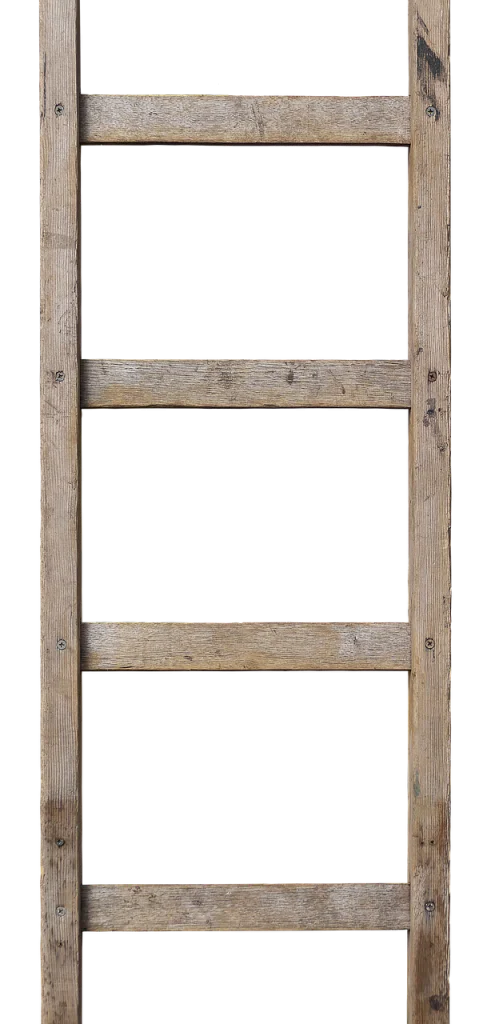
Fixed ladders are a fundamental part of many industrial, commercial, and residential environments, offering access to elevated areas such as rooftops, storage tanks, or machinery platforms. However, using these ladders without understanding the proper range, specifications, and safety protocols can result in serious injuries or fatalities. This article aims to explore the factors that determine the appropriate range for fixed ladders and provide comprehensive guidelines for their safe use.
What is a Fixed Ladder?
A fixed ladder is a vertical or inclined structure securely attached to a building or other permanent structure. These ladders are designed to provide access over long vertical distances and are commonly found in areas where mobile or portable ladders are impractical or unsafe. Fixed ladders may be found in applications ranging from industrial plants and power plants to warehouses, silos, and even residential buildings.
Key Safety Regulations and Guidelines
The design, installation, and use of fixed ladders are governed by several safety standards and regulations, including the Occupational Safety and Health Administration (OSHA) and the American National Standards Institute (ANSI). These guidelines are in place to ensure that users remain safe while accessing elevated areas. It is important to follow these standards to minimize accidents and injuries.
OSHA Regulations
OSHA provides clear guidelines regarding the appropriate use of fixed ladders in various environments. According to OSHA Standard 1910.21, a fixed ladder is required to meet certain height and design specifications. For instance:
- Height Range: Fixed ladders should be used when the height to be accessed is 24 feet or more. This is considered the minimum height at which a fixed ladder should be used rather than a portable ladder.
- Ladder Design: Fixed ladders must be equipped with safety features such as cages or fall protection systems, depending on the height and location. For ladders taller than 24 feet, cages or other fall arrest systems are typically required.
- Rungs and Spacing: The rungs of fixed ladders should be evenly spaced, usually 12 inches apart, and constructed to be slip-resistant.
- Weight Load: Fixed ladders must support a minimum load of 250 pounds to ensure that they can handle the weight of users and any additional tools or equipment they may be carrying.
ANSI Standards
The American National Standards Institute (ANSI) also sets forth design and safety guidelines for fixed ladders. ANSI Standard A14.3 provides additional recommendations on ladder strength, materials, and installation. Some of the key takeaways include:
- Ladder Width: Fixed ladders should be at least 16 inches wide for easier access and to reduce the risk of users losing their footing.
- Maintenance: Fixed ladders should be regularly inspected for wear and tear, corrosion, or any damage to ensure continued safety.
- Safety Devices: Fall protection devices like personal fall arrest systems (PFAS) should be considered for ladders that exceed certain heights. ANSI recommends that ladders over 24 feet be fitted with a fall arrest system.
When Should Fixed Ladders Be Used?
Fixed ladders are typically used in situations where access to an elevated area is frequent and needs to be secured. They should be used under the following conditions:

- Height Greater Than 24 Feet: As mentioned above, fixed ladders are generally recommended when the height to be accessed exceeds 24 feet. For shorter access points, portable ladders or stairs may be more practical.
- Industrial or Hazardous Environments: Fixed ladders are essential in settings where people need to regularly access hard-to-reach equipment, elevated tanks, roofs, or platforms. In these environments, they are safer than portable ladders because they provide a stable, permanent means of access.
- Limited Space for Mobile Ladders: In areas where there is limited space to maneuver a mobile ladder, such as near equipment or machinery, fixed ladders may be more appropriate.
- Regular Access: Fixed ladders are ideal for locations that require consistent access, such as maintenance platforms or silos. Their permanent nature allows for safe and easy access over time.
- Location with Severe Weather: Fixed ladders are preferable in locations with severe weather conditions. Since these ladders are securely installed, they provide a reliable means of access regardless of environmental factors like wind or rain.
Height and Safety Considerations for Fixed Ladders
The range in which a fixed ladder should be used can also depend on several factors, including the height of the structure, the available space, and the safety systems in place.
Under 24 Feet: Portable Ladders vs. Fixed Ladders
- For heights under 24 feet, portable ladders, such as step ladders or extension ladders, can be more practical. Fixed ladders may be over-engineered for such heights, and the cost and complexity of installation may not be justified.
- However, if access to the area requires frequent climbing or if safety is a concern, a fixed ladder may still be appropriate for these lower heights.
Over 24 Feet: Fixed Ladders Become Essential
- Cages and Safety Features: For ladders over 24 feet, the need for fall protection becomes critical. Fixed ladders in this height range must be equipped with safety cages, guardrails, or personal fall arrest systems (PFAS). According to OSHA regulations, cages are required on fixed ladders over 24 feet to prevent falls.
- Top-rail Support: Fixed ladders over 24 feet should include top-rail support to assist climbers in maintaining balance and reducing the risk of falling.
Beyond 30 Feet: Specialized Protection
- For fixed ladders that reach heights over 30 feet, a more specialized fall protection system is typically required. This could include horizontal safety rails or a ladder safety system that allows users to connect a personal fall arrest device to the ladder while climbing. These systems ensure that climbers are protected in case of a slip or loss of footing.
- The higher the ladder, the more critical it becomes to consider factors such as wind resistance, weather conditions, and the physical capability of workers to safely climb such a structure.
Key Features and Design Elements for Fixed Ladders

Fixed ladders should be designed with specific safety features to ensure that they can be used effectively and safely at higher ranges. The most important design features include:
- Rungs: Rungs must be wide enough (usually at least 16 inches) and have a slip-resistant surface to reduce the risk of accidents.
- Cages or Safety Rails: For ladders that exceed 24 feet, a cage or other fall protection measures must be installed to provide added safety for climbers.
- Landing Platforms: For ladders above certain heights (e.g., 50 feet), landing platforms or intermediate rest platforms are often recommended to provide climbers with a place to rest or move between different sections of the ladder.
- Guardrails: Fixed ladders should be installed with guardrails on the side of the ladder, particularly when they exceed heights of 30 feet or in industrial settings.
Maintenance and Inspections of Fixed Ladders
Regardless of the height, regular inspections and maintenance of fixed ladders are crucial to ensure their continued safety. This includes checking for:
- Rust or Corrosion: Fixed ladders exposed to the elements should be regularly inspected for signs of rust, corrosion, or structural damage that could compromise their stability.
- Damage to Rungs or Supports: The rungs should be checked for cracks, bending, or other forms of damage. Damaged rungs can be a significant hazard.
- Fall Protection Devices: Ensure that any fall protection devices such as personal fall arrest systems, cages, or rails are in proper working condition.
Conclusion
Fixed ladders are an essential part of many workplaces, providing safe access to high and difficult-to-reach areas. Understanding when and where fixed ladders should be used, particularly in relation to their height and safety features, is crucial for ensuring the safety of workers. For heights over 24 feet, fixed ladders should be used with proper fall protection and safety measures in place. Regular maintenance and adherence to safety regulations can help reduce accidents and ensure that these essential tools remain reliable and safe for daily use. Always adhere to OSHA and ANSI guidelines when installing, using, and maintaining fixed ladders, and ensure that appropriate safety measures are in place for workers at all times.
RELATED POST
- What Height Need a Laddar
- When in Use How Do You Move a Laddar
- When was the Ladder Invented
- The Articulated Ladder Safely
Recent Posts
Maintaining clean gutters is essential for preventing water damage to your home, and choosing the best ladder for cleaning gutters can make the job much easier and safer. With so many options on the...
Best Ladder for Cleaning Caravan Roof: Top Picks for You Every Adventure!
Today we will discuss the best ladder for cleaning caravan roof. Cleaning caravan roofs is one of the crucial tasks.After many days, a caravan roof can get dirty by debris, dirt, and grime. These can...
